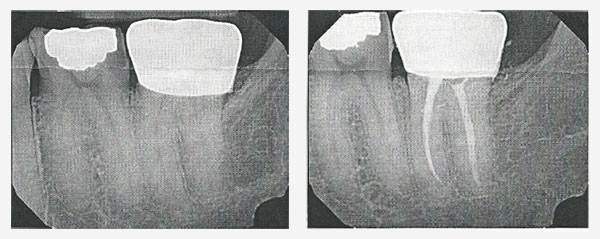A root canal therapy is indicated when the dental pulp (nerve) inside the tooth is injured or infected.
The pulp is the inside of the tooth which is made of soft tissue that contains nerves and blood vessels. In the event that the pulp should become injured, diseased or unable to repair itself it can die off. Some causes of pulp death include; deep or extensive decay, a cracked tooth, serious injury, and problems that may arise with large fillings. In this way bacteria can enter the dental pulp. In many cases this results in infection, pain and swelling. Even in the absence of pain bacteria can damage the bone surrounding the tooth. Without root canal treatment the tooth will have to be extracted.
Root canal treatment may take one or more visits. A general dentist or endodontist, root canal specialist, can perform root canal therapy.
1) Local anesthetic is given to numb the tooth. The tooth is isolated with a dental dam or cotton rolls to keep the tooth dry and saliva free, otherwise, bacteria can enter the canal. An opening is made through the crown of the tooth to gain access to the pulp chamber.
2) The dental pulp is removed from the pulp chamber and canal (the space inside the root). Each canal is cleaned, shaped irrigated so it can be filled with a rubber type of material to seal the canal.
3) In the opening of the tooth a temporary filling will be placed so bacteria and saliva cannot enter the treated root canal.
4) Lastly, the tooth will be restored with a crown or filling to strengthen it.
5) Before, during, or after root canal treatment antibiotics may be given for the infection at the discretion of your dentist.
Teeth that have had root canal therapy can last for several years. Sometimes these teeth can become fractured, decayed, or get gum disease, like any other teeth. Regular dental exams and daily brushing and flossing will be needed to keep all of your teeth healthy, whether they have had root canal therapy or not.


